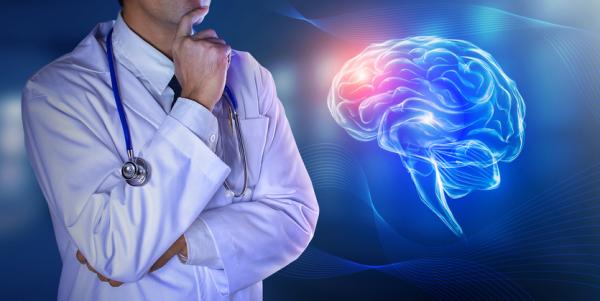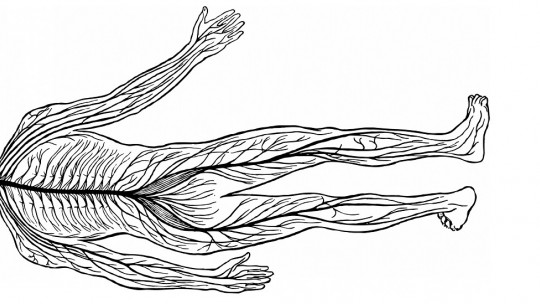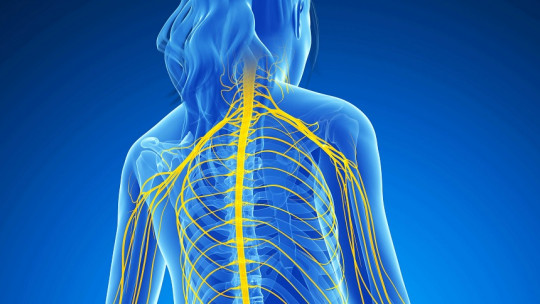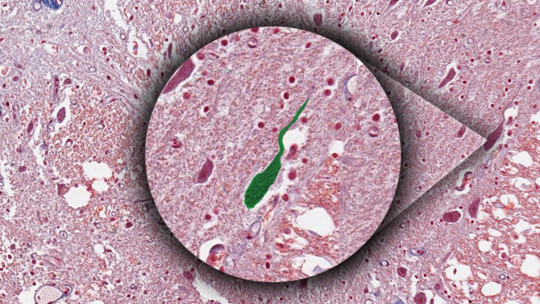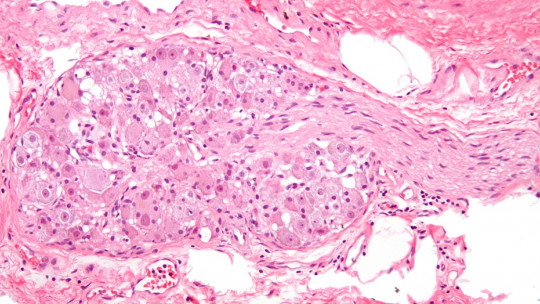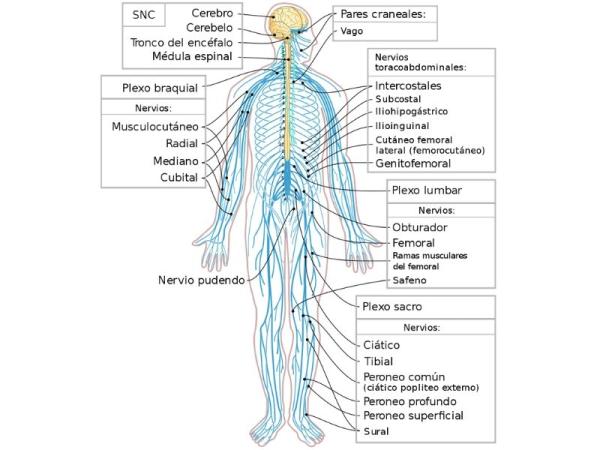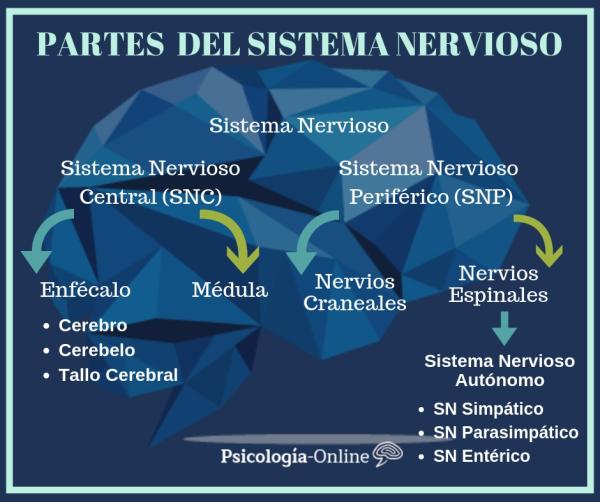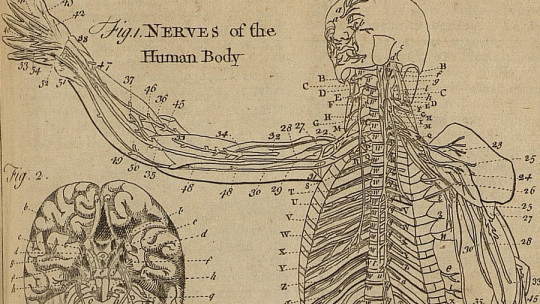Do you know what the function of the peripheral nervous system is, what the parts of the peripheral nervous system are or why the central nervous system and the peripheral nervous system must work in coordination?
The peripheral nervous system is made up of a large number of nerves and is responsible for functions as diverse as breathing, voluntary movements or responses in dangerous situations. Furthermore, without the existence of this system, the brain would not be able to receive information, preventing decision-making that favors survival. If you want to know more about this system, continue reading our PsychologyFor article: Peripheral nervous system: functions and parts
Peripheral nervous system
He nervous system It is the set of nerves and specialized cells, neurons, that are responsible for controlling all the functions of the body, as well as relating and coordinating the actions of different organs and parts of the body.
Its activity is carried out through the emission and reception of electrical signals or nerve impulses. From an anatomical point of view, the nervous system is divided into the central and peripheral nervous system The central nervous system is made up of the brain and spinal cord.
Peripheral nervous system: definition
He peripheral nervous system (PNS) is the part of the nervous system that is made up of the nerves and neurons found outside the brain and spinal cord This PNS neural network connects the brain and spinal cord with the rest of the body, allowing the exchange of information.
The peripheral nervous system is divided into somatic and autonomic nervous system.
- The somatic peripheral nervous system: It is responsible for sensory and motor information.
- The nervious system peripheral autonomous: It is responsible for the control of involuntary bodily functions. The peripheral autonomic or vegetative nervous system, in turn, is divided into the sympathetic nervous system and the parasympathetic nervous system.
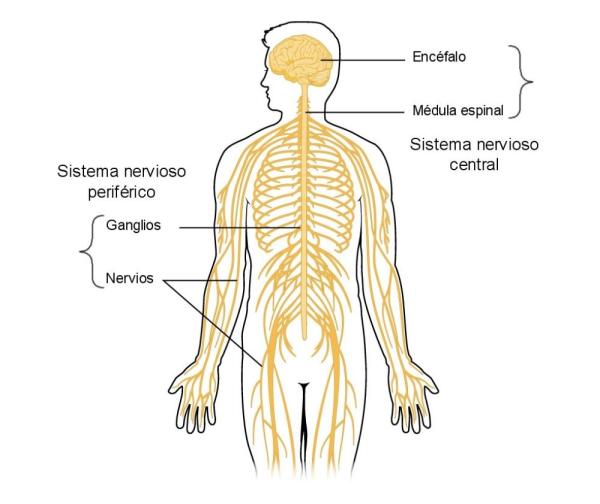
Peripheral nervous system: functions
What are the functions of the peripheral nervous system? Next, we explain the main functions of the peripheral nervous system:
- The main function of the peripheral nervous system is to connection and relationship between the brain and spinal cord with the rest of the body : organs, limbs and skin.
- It enables the brain and spinal cord to send and receive information from the environment, which allows the reaction to external stimuli and the environment.
- This system allows the muscle activation to perform both voluntary and involuntary movements.
- The peripheral nervous system plays a basic role in ensuring the maintenance of stable internal conditions. It depends on him control of breathing, digestion, salivation, etc It allows you to perform these functions without having to consciously think about them.
- The flight or fight responses They also depend on this system. Prepares and mobilizes the body to respond quickly to situations of danger or threat.
- Thanks to him information about the environment is transmitted to the brain , which is necessary to generate responses. These reactions have the function of protecting the organism and are vital for survival.
- The nerves of the peripheral nervous system are not capable of making complex decisions, but without their transmission of information to the brain, it would not be able to develop responses.
In the following article you can see other differences between the central and peripheral nervous system.
Peripheral nervous system: parts
What are the parts of the peripheral nervous system? The main parts of the peripheral nervous system They include the cranial nerves, spinal nerves, and nerve ganglia. How is the peripheral nervous system formed? The peripheral nervous system is made up of nerve ganglia and 43 pairs of nerves; 12 pairs of cranial nerves and 31 spinal pairs.
Cranial nerves
The cranial nerves are part of the peripheral nervous system. The 12 pairs of cranial nerves They are located in part of the head and neck. Its functions are sensitive, motor or mixed:
- Olfactory Nerve (I): It is responsible for olfactory stimuli and information.
- Optic Nerve (II): sends visual stimuli to the brain.
- Oculomotor nerve (III): It intervenes in the muscle movements of the eye.
- Trochlear nerve (IV): It controls one of the muscles of the eye that allows the movement of the eyeballs.
- Trigeminal nerve (V): It transmits sensory information about the face and mouth, as well as responsible for chewing.
- Abductor nerve (VI): It enables abduction, that is, the movement of the eye to the opposite side of the nose.
- Facial nerve (VII): It controls several muscles of the face, being able to create facial expressions, as well as being a recipient of gustatory information from the tongue.
- Vestibulocochlear nerve (VIII): responsible for auditory impulses, balance and orientation.
- Glossopharyngeal nerve (IX): This nerve is related to receiving signals from the tongue and pharynx and issuing commands to this area.
- Vagus Nerve (X): It conducts impulses from the pharynx and larynx to the brain, receives gustatory information from the epiglottis, and influences the action of swallowing.
- Accessory nerve (XI): activates the thoracic, abdominal and back muscles.
- Hypoglossal nerve (XII): transmits information to the muscles of the throat and tongue.
spinal nerves
spinal nerves arise from the spinal cord and conduct stimuli from the rest of the body These nerves have both a sensory and a motor part. The 31 pairs of spinal nerves are distributed as follows:
- Eight pairs of cervical nerves (C1 to C8) that exit the cervical spine.
- Twelve pairs of dorsal or thoracic nerves (T1 to T12) emerging from the thoracic spine.
- Five pairs of lumbar nerves (L1 to L5) emerging from the lumbar area.
- Five pairs of sacral nerves (S1 to S5) arise from the sacrum bone, located at the base of the spine.
- A pair of coccygeal nerves in the tailbone.
nerve ganglia
The ganglia are a group of neuronal bodies which are part of the peripheral nervous system. They are interspersed in the path of the nerves and are divided into sensory or autonomic ganglia, in relation to the function they perform.
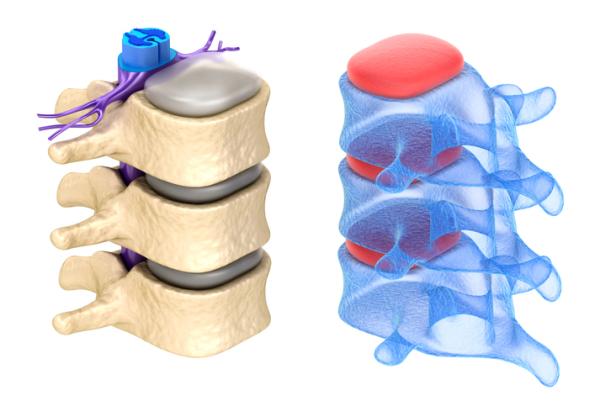
Diseases of the peripheral nervous system
The peripheral nervous system is not protected by bone structures, which makes it relatively vulnerable to a series of diseases. Conditions can be acquired or born. What are the most common diseases of the peripheral nervous system? The most common pathologies of this system are neuropathies, they refer to the damage or disease of one or more nerves
There are several types of this disease, due to the number of nerves that make up the PNS. Symptoms can develop quickly or slowly, developing over years. The symptoms usually occur on both sides of the body and begin in the fingers of the extremities. Neuropathy usually manifests itself through insensitivity, pain, burning, tingling, weakness, numbness, etc. Some of the most common types of neuropathies are the following:
- Carpal tunnel syndrome: pressure on the nerve in the wrist, causing numbness and loss of movement in the palm and fingers. This syndrome is associated with people who normally work with their hands performing repetitive movements. Here you will find more information about the symptoms, causes and treatment of carpal tunnel syndrome.
- Compression of the ulnar nerve: injury to the ulnar nerve, which is located throughout the arm. The pain or numbness begins in the hands, and can reach the elbow.
- Peroneal nerve compression: This nerve is located in the lower part of the leg. There is a loss of control and muscle mass in the ankles, feet and leg.
- Guillain Barre syndrome: Another disease of the peripheral nervous system is the disorder in which the immune system itself mistakenly attacks the nerves. The first manifestations are tingling and weakness in the extremities, spreading rapidly and producing paralysis in the body. With treatment, most people recover from this syndrome.
- Alcoholic neuropathy: It is due to nerve damage from alcohol intoxication, as well as poor nutrition, characteristic of alcoholism. Symptoms include pain and weakness in the extremities.
- Diabetic neuropathy: This disease of the peripheral nervous system develops due to wear and tear on the nerves caused by high blood sugar levels. Symptoms appear on both the extremities and the face.
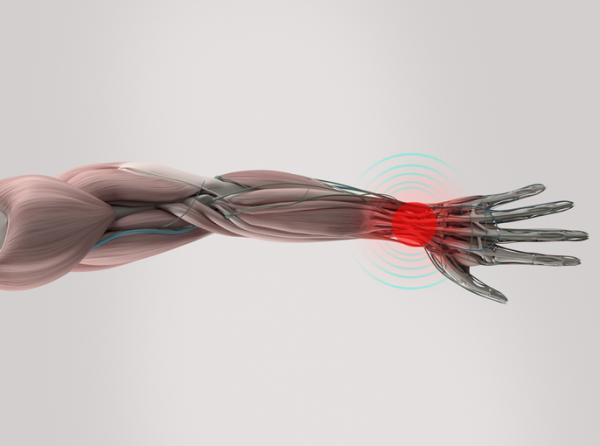
This article is merely informative, at PsychologyFor we do not have the power to make a diagnosis or recommend a treatment. We invite you to go to a psychologist to treat your particular case.
If you want to read more articles similar to Peripheral nervous system: functions and parts we recommend that you enter our Neurosciences category.
Bibliography
- Brain, W.R. (1965). Diseases of the nervous system. The Athenaeum.
- Castañeda Fernández, JA, & Corral García, J. (2003). Peripheral neuropathies. Medisan7(4).
- Fajardo, LEG, Linares, MPM, & Olaya, HLG (2001). Inflammation and pain: changes in the peripheral and central nervous system. Medunab, 4(10), 59-72.
- Guyton, A. C. (1994). Anatomy and physiology of the nervous system. Basic neuroscience. Madrid: Panamericana Medical Editorial.

